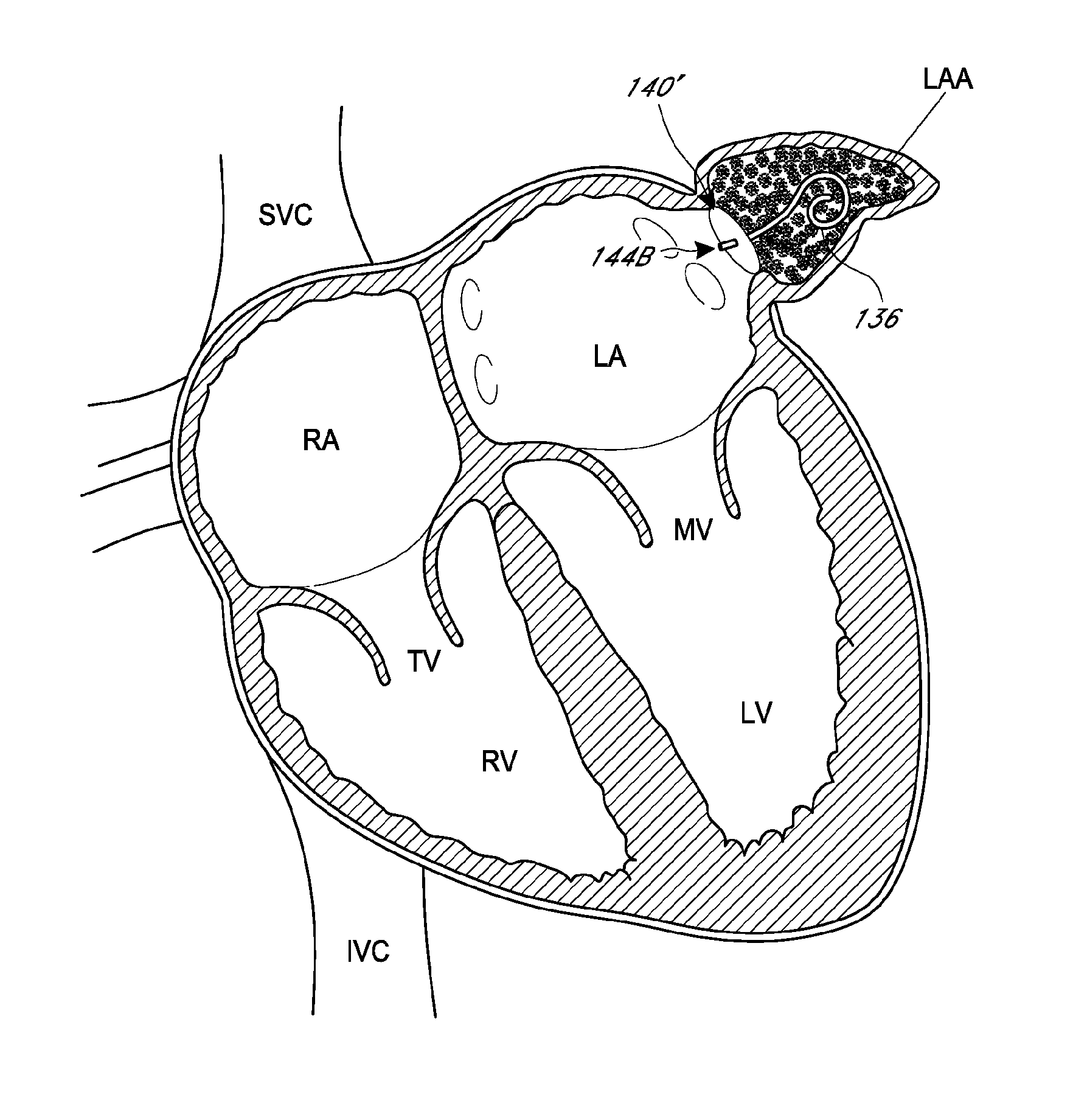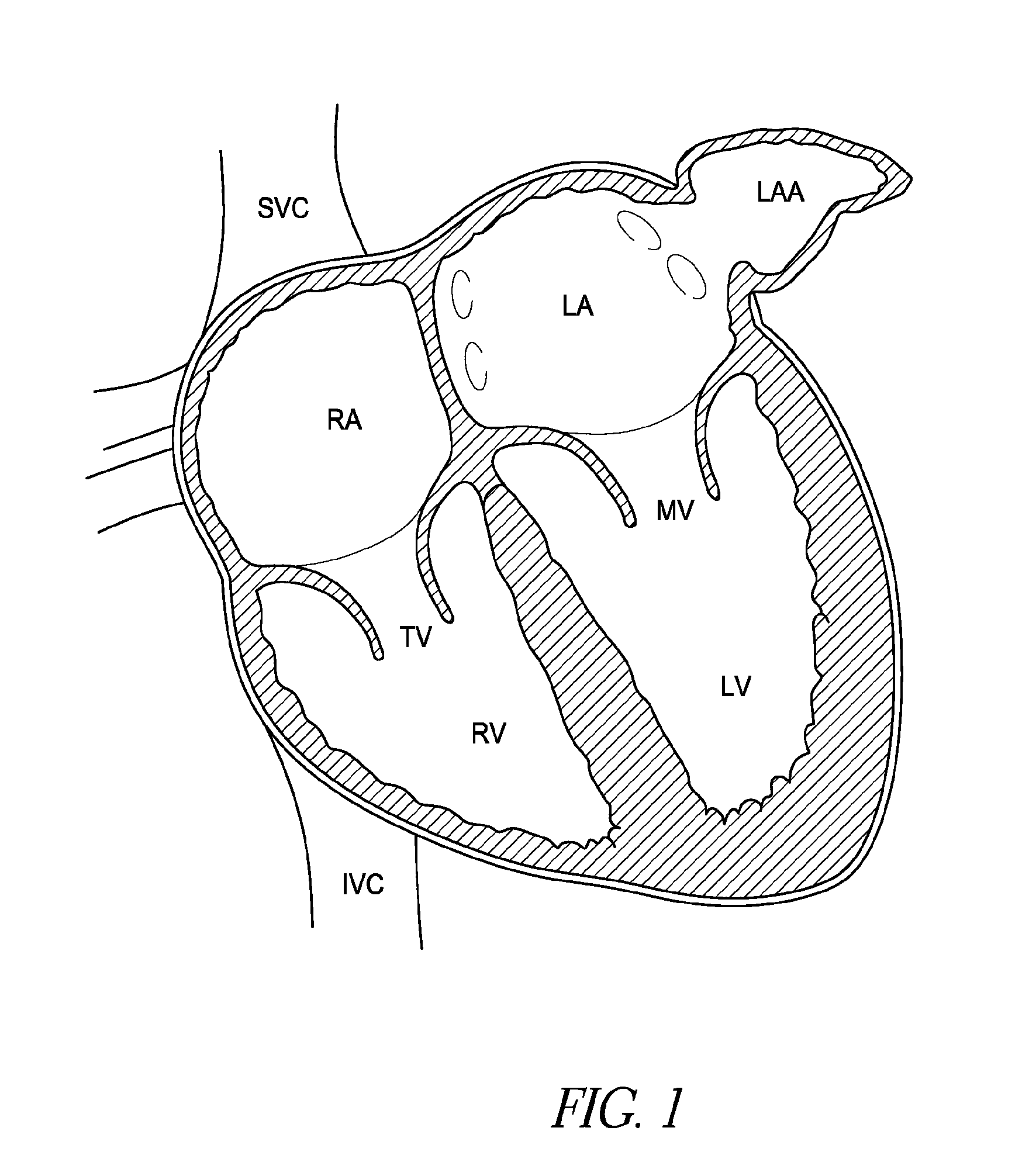Left atrial appendage occlusion devices and methods
a technology for appendages and occlusion devices, which is applied in the field of left atrial appendage occlusion devices and methods, can solve the problems of inability to provide successful laa occlusion therapy, inability to meet the needs of patients, and complex devices that have been developed, etc., and achieve the effect of minimizing the flow of blood
- Summary
- Abstract
- Description
- Claims
- Application Information
AI Technical Summary
Benefits of technology
Problems solved by technology
Method used
Image
Examples
Embodiment Construction
[0034]As noted above, treatment of the left atrial appendage would be a significant advance in prevention of certain types of stroke.
[0035]FIG. 1 shows relevant anatomy of the heart, reference below. The normal human heart has four chambers, i.e., the right and left atria (RA, LA) and the right and left ventricles (RV, LV). The RA receives blood from the venous vasculature. Venous blood enters the RA from the superior vena cava (SVC) and the inferior vena cava (IVC) blood vessels. Normal pumping of the heart causes blood in the RA to flow through the tricuspid valve (TV) into the right ventricle (RV). Blood in the RV is expelled from the heart into the pulmonary artery. Blood expelled into the pulmonary artery flows into the lungs where it is oxygenated and thereafter flows back to the LA. The oxygenated blood in the LA flows through the mitral valve (MV) into the LV. Blood in the LV is then expelled out of the heart into the ascending aorta and from there to smaller vessels of the ...
PUM
 Login to View More
Login to View More Abstract
Description
Claims
Application Information
 Login to View More
Login to View More - R&D
- Intellectual Property
- Life Sciences
- Materials
- Tech Scout
- Unparalleled Data Quality
- Higher Quality Content
- 60% Fewer Hallucinations
Browse by: Latest US Patents, China's latest patents, Technical Efficacy Thesaurus, Application Domain, Technology Topic, Popular Technical Reports.
© 2025 PatSnap. All rights reserved.Legal|Privacy policy|Modern Slavery Act Transparency Statement|Sitemap|About US| Contact US: help@patsnap.com



